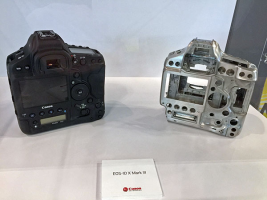the Canon battery and charging tech is quite a ways behind what is available on phones. the battery pack itself is not keeping up with the pace of technology available in the smartphone space.You know, now that you mention it, I am surprised I have not seen fast charging in a camera. I do not know much about if this would be possible with the internals, but charging batteries is one of the most tedious tasks for any photographer. If a camera like the R1 was able to implement this, it would be a blessing.
this website shows what's inside the LP-E6 battery : https://www.ifixit.com/Teardown/Canon+LP-E6+battery+pack+Teardown/133243
these are 2 Panasonic batteries in series (~8.4V) .. digging around will reveal that the battery tech is from 2010
It's a 2Ah battery but the charger is rated at 1.2A (or < 1C as they say in the battery world).
In-body fast charging is bound to create heat so I don't know what's an acceptable charging current, but I do want to see fast (> 1C ) charging brought to the adapters. Not a battery expert .. but If my smartphone can charge 0 to 80% for a 2Ah battery in about 10 minutes, I think it can be done for camera batteries.
writing this - I wonder if such a fast charger is available on the market.
Upvote
0

